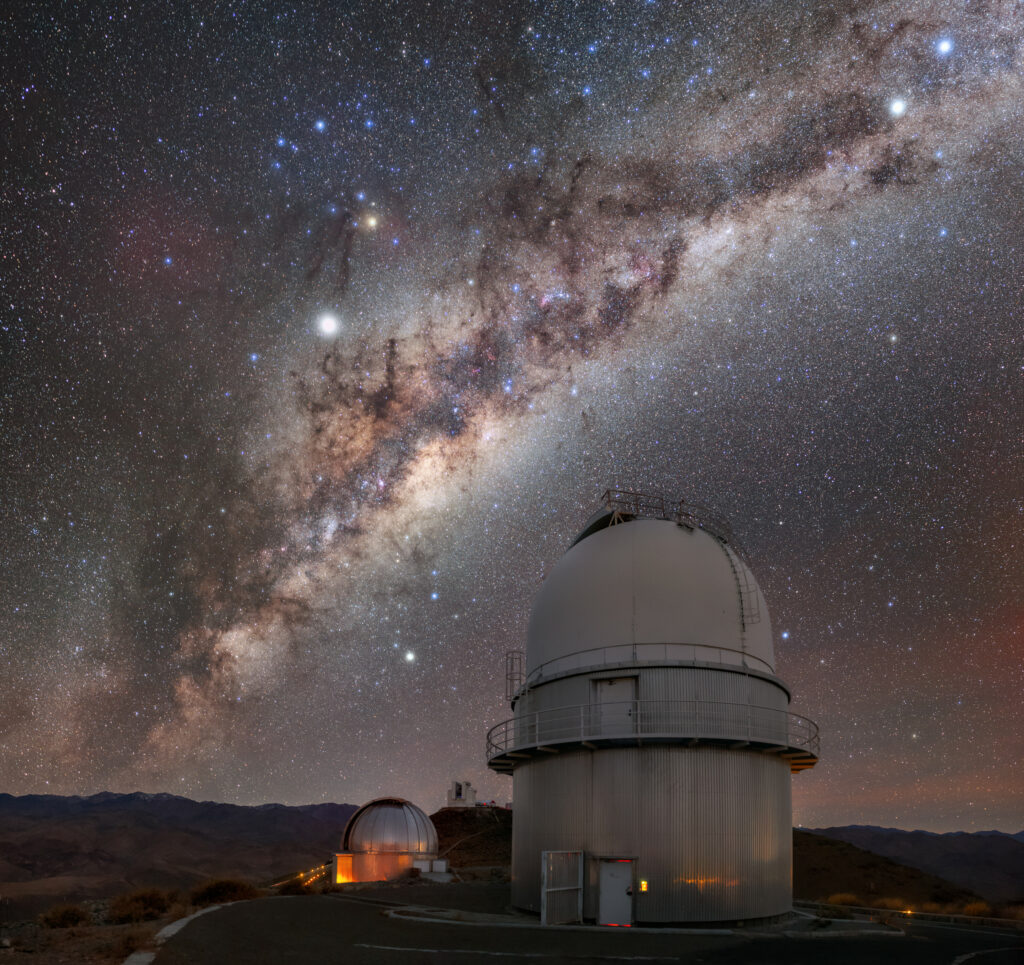The presented picture was taken in the Chilean Atacama Desert. It depicts a road under a sky dotted with countless stars. It leads to the La Silla Observatory, which is home to many different telescopes. In the foreground we see a Danish 1.54-meter telescope, behind it is a 2.2—meter MPG/ESO reflector, and behind it is a New Technology Telescope (NTT ESO).

The 1.54-meter Danish telescope is one of the busiest instruments of the observatory. It has made a number of scientific discoveries, such as observations of the optical afterglow of gamma-ray bursts, probably caused by collisions of neutron stars. The afterglow of gamma-ray bursts is also actively observed on the 2.2-meter MPG/ESO telescope, after which large telescopes are connected to their study.
The NTT telescope is barely visible in this picture, but its appearance is associated with some key achievements of observational astronomy. The fact is that large mirrors bend under their weight. Because of this, the configuration of the optical system has to be adjusted to ensure optimal image quality and resolution.
NTT was the first telescope in which the adjustment of mirrors took place directly during the observation process by tracking the reference star. This method, called adaptive optics, is now widely used on large professional telescopes.
Recall that we recently published a magnificent image demonstrating the process of creating an “artificial” reference star using lasers.
According to https://www.eso.org
Follow us on Twitter to get the most interesting space news in time
https://twitter.com/ust_magazine

